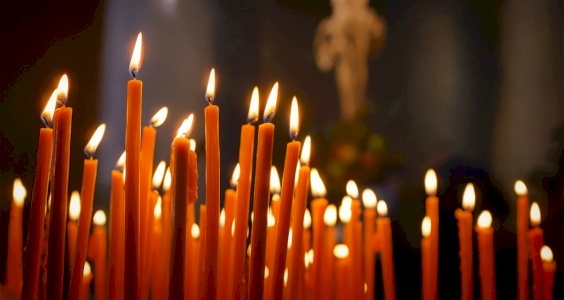The Divine Liturgy for the Encounter with the Lord will be served at 9:00 a.m.
No, I haven’t lost my mind. The Greek name for February 2’s feast is “Hypapante,” which means “Meeting.” The feast of the Encounter with the Lord.
There was once a seminary student who used to call it “Hippopotamus,” which sorta stuck in memory. In the West, the Church has three names for this feast: the current official name (Presentation of the Lord in the Temple), the former official name (the Purification of the Blessed Virgin Mary) and the popular nickname (Candlemas). The feast is 40 days since the Holy Nativity which signals the end of the Christmas season. In some quarters of the Church the focus on the Infant Jesus closes and makes a transition to preparing for Great Lent. St. John Paul II began the custom of keeping the Nativity scene in St. Peter’s square until February 2.
This feast of Candlemas Day also was important in the lives of farmers. An old English song went as follows:
“If Candlemas be fair and bright,
Come, Winter, have another flight.
If Candlemas brings clouds and rain,
Go, Winter, and come not again.”
Moreover, February 2nd called “cross-quarter” day in astronomical terms because it marks the halfway point between the winter solstice and the spring equinox; the earth has traveled about one half of the way between winter and spring. Daylight increases and the earth in this hemisphere warms, the honey bees begin to think about spring and laying hens start to lay more eggs.
Candles in our Church
For the Feast of the Encounter-Meeting of Our Lord it is a pious and venerable tradition in Ukrainian Church, like other Eastern Churches, is to bless candles. It is impossible to imagine an Eastern Church without burning candles. Candles made of beeswax —but many candles now have a portion of beeswax— are used in our as a form of sacrifice and devotion to God or Saints.
Candles in Divine Services and ceremonies are symbolic of Jesus Christ, who is called “the Light of the World.” When we see so many candles everywhere, we know that the Lord, Light of the World, is everywhere in the whole church, our homes, our work places, and He is in us, too. The symbolic nature of candles is said to represent the two natures of Jesus: the Divine (the burning wick) and the Human (the wax body).
Bring candles to church for the blessing of candles at the Divine Liturgy at 9:00 a.m.
